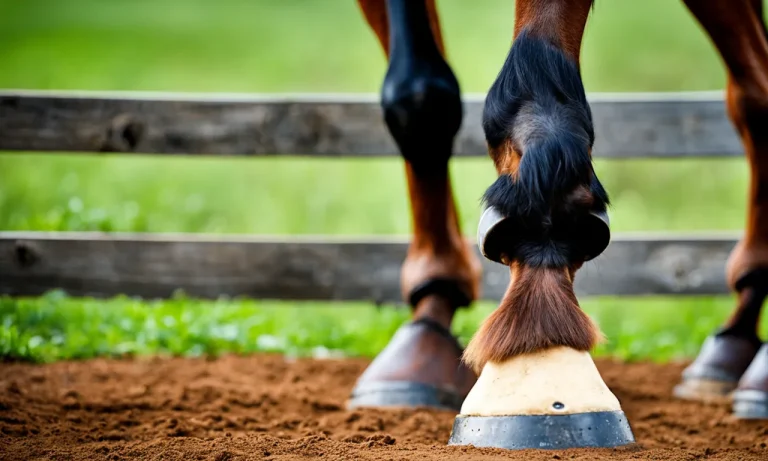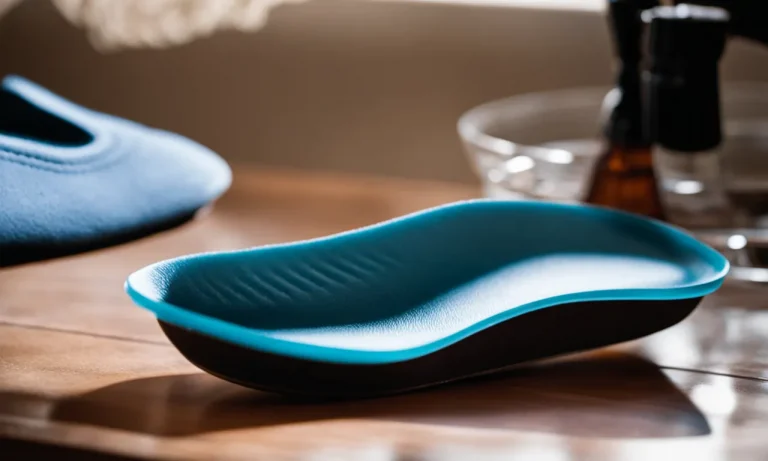Running is a great way to stay active and get your heart pumping. But do you need special running shoes, or can you just throw on your trusty hiking boots and hit the pavement? This is a common question for those looking to save money or make use of the shoes they already own.
If you’re short on time, here’s a quick answer to your question: While it’s possible to run in hiking boots for short distances, it’s generally not recommended for regular or long distance running due to the heavy weight and lack of cushioning in hiking boots compared to running shoes.
In this comprehensive guide, we’ll cover everything you need to know to help you decide if you can run in hiking boots, including the pros and cons, factors to consider, tips for making it work, and recommendations for when to choose proper running shoes instead.
The Pros and Cons of Running in Hiking Boots
Pros:
- Stability: Hiking boots are designed to provide excellent stability and support, which can be beneficial when running on uneven or rugged terrains. The sturdy construction and ankle support offered by hiking boots can help prevent ankle sprains and injuries.
- Durability: Hiking boots are typically made with durable materials that can withstand rough conditions. This means they can handle the impact and wear of running, making them a good option for those who enjoy both hiking and running.
- Protection: Hiking boots often come with features such as reinforced toe caps and thick soles, providing extra protection for your feet during runs. This can be particularly useful when running on rocky trails or in areas with potential hazards.
- Versatility: Hiking boots are designed to be versatile and perform well in various outdoor activities. This means that if you already own a pair of hiking boots, you can use them for both hiking and running, saving you the need to invest in separate running shoes.
Cons:
- Weight: One of the main drawbacks of running in hiking boots is their weight. Hiking boots are generally heavier than running shoes, which can slow down your pace and make running more challenging.
- Flexibility: Hiking boots are designed with a stiff sole to provide stability and support. However, this stiffness can limit the natural movement of your feet and restrict the flexibility required for running efficiently. It can also lead to discomfort or blisters during longer runs.
- Cushioning: Hiking boots often have less cushioning compared to dedicated running shoes. This can result in less shock absorption, potentially leading to more strain on your joints and muscles. If you frequently run long distances or on hard surfaces, the lack of cushioning may cause discomfort or increase the risk of injuries.
- Breathability: Hiking boots are designed to be waterproof and offer protection from the elements, which often comes at the expense of breathability. Running in hiking boots may cause your feet to become hot and sweaty, increasing the risk of blisters or discomfort.
While running in hiking boots can have its advantages, it’s important to consider your specific needs and preferences. If you primarily engage in hiking and occasionally run, using hiking boots for both activities can be a convenient option.
However, if you are a frequent or serious runner, investing in a pair of dedicated running shoes would be a wise choice to ensure optimal performance and reduce the risk of running-related injuries.
For more information on choosing the right footwear for running, you can visit websites such as Runner’s World or Verywell Fit.
Key Factors to Consider Before Running in Hiking Boots
Weight of the boots
One of the key factors to consider before running in hiking boots is the weight of the boots. Hiking boots are typically heavier than running shoes due to their sturdy construction and added features such as ankle support and rugged outsoles.
The weight of the boots can affect your running performance and may make you feel more fatigued compared to running shoes. However, advancements in technology have led to the development of lightweight hiking boots that are specifically designed for running.
These boots provide the necessary support and durability while minimizing the weight, allowing for a more comfortable running experience.
Cushioning and support
Hiking boots are designed to provide ample cushioning and support for long hikes on uneven terrain. However, when it comes to running, this level of cushioning and support may not be ideal. Running shoes are specifically engineered to provide maximum shock absorption and cushioning to reduce the impact on your joints and muscles.
Hiking boots, on the other hand, are built to provide stability and protection against rough terrains. If you plan to run in hiking boots, consider choosing a pair that offers a balance between cushioning and support to ensure a comfortable and injury-free running experience.
Breathability
Another important factor to consider before running in hiking boots is the breathability of the boots. Hiking boots are often made with materials that prioritize durability and water resistance, which can limit breathability.
Running generates a lot of heat and sweat, so it is crucial to choose hiking boots that are breathable to prevent overheating and discomfort during your runs. Look for boots that have mesh panels or moisture-wicking properties to allow for proper ventilation and moisture management.
Ankle support
Hiking boots are renowned for their excellent ankle support, which is crucial for stability during long hikes. However, when it comes to running, ankle support may not be as necessary. Running shoes are designed to allow for a greater range of motion and flexibility in the ankle, which is essential for a natural running gait.
If you decide to run in hiking boots, be aware that the increased ankle support may restrict your ankle movement and potentially affect your running form. Consider opting for hiking boots with a lower ankle collar or choose running shoes for a more comfortable and unrestricted running experience.
Tread and traction
The tread and traction of hiking boots are specifically designed to provide stability and grip on various terrains, such as rocky trails or slippery surfaces. While this is beneficial for hiking, it may not be ideal for running on paved surfaces or even trails with minimal obstacles.
The aggressive outsole patterns of hiking boots can cause unnecessary friction and resistance, potentially hindering your running performance. If you plan to run in hiking boots, look for boots with a more moderate tread pattern that strikes a balance between grip and smoothness to ensure a more efficient and comfortable run.
Tips for Running Successfully in Hiking Boots
Start slow and short
Running in hiking boots can be a different experience compared to running shoes. To avoid discomfort and potential injury, it’s important to start slow and gradually increase your running distance. Begin with shorter runs to allow your feet and legs to adjust to the added weight and support of the boots.
This will help build up your strength and endurance over time.
Focus on form
Running in hiking boots requires a slightly different running form compared to running shoes. Since hiking boots are heavier and have a stiffer sole, it’s important to maintain proper form to minimize the risk of injury.
Keep your head up, shoulders relaxed, and stride shorter to maintain stability and balance. Be mindful of your foot placement to ensure a smooth and efficient running motion.
Wear moisture-wicking socks
When running in hiking boots, it’s essential to wear moisture-wicking socks to prevent excessive sweating and blisters. Moisture-wicking socks are designed to pull moisture away from your skin, keeping your feet dry and reducing the chances of friction and discomfort.
Consider investing in high-quality socks that are specifically designed for running or hiking.
Loosen laces
One common mistake when running in hiking boots is tying the laces too tightly. Tight laces can restrict blood circulation and cause discomfort or pain during your run. Loosen the laces slightly to allow for better flexibility and movement.
However, ensure that your boots are still securely fastened to provide the necessary support and stability.
Consider insoles
If you find that the cushioning and support of your hiking boots are not sufficient for running, consider adding insoles. Insoles can provide extra cushioning, arch support, and shock absorption, making your runs more comfortable and reducing the strain on your feet and joints.
Look for insoles that are specifically designed for running or provide the necessary support for your foot type.
Check the tread
Before hitting the trails or roads for a run, check the tread of your hiking boots. The tread pattern of hiking boots is designed to provide traction on uneven and slippery surfaces. However, worn-out treads can reduce grip and increase the risk of slipping or sliding.
If the tread is worn down, it may be time to invest in a new pair of boots or have the tread replaced.
Watch for hot spots and blisters
Running in hiking boots may increase the risk of developing hot spots or blisters due to the different fit and materials of the boots. Pay close attention to any areas of discomfort or rubbing during your runs. Apply moleskin or blister prevention products to areas prone to friction.
If you notice any signs of blisters or persistent discomfort, it’s important to address them promptly to prevent further irritation or injury.
Remember, running in hiking boots is not the same as running in running shoes. It may take some time for your feet and legs to adjust to the different support and weight of the boots. Don’t be discouraged if your pace or distance is initially affected.
With practice and patience, you can successfully incorporate running into your hiking boot adventures.
When to Wear Proper Running Shoes Instead
For long distances
While hiking boots are designed for stability and support during hikes on rough terrains, they may not be the best option for running long distances. Running shoes are specifically engineered to provide cushioning, shock absorption, and flexibility, which are essential for reducing the impact on your feet and joints during lengthy runs.
If you’re planning on going for a marathon or any other long-distance run, it’s recommended to opt for proper running shoes to ensure maximum comfort and reduce the risk of injuries.
For high intensity runs
Intense workouts like sprints or interval training require footwear that can provide the necessary support and responsiveness. While hiking boots offer excellent ankle support and durability, they are typically heavier and less flexible compared to running shoes.
Running shoes are designed to be lightweight and provide superior cushioning, which allows for quick and agile movements. So, if you’re planning on engaging in high-intensity running activities, it’s advisable to switch to proper running shoes to optimize your performance and reduce the strain on your feet and legs.
If you have injuries
If you are dealing with any foot or leg injuries, it’s crucial to prioritize your comfort and recovery. Running shoes are often equipped with features like extra cushioning, arch support, and stability control, which can help alleviate pain and provide the necessary support for injured areas.
Hiking boots, on the other hand, may not offer the same level of cushioning and support required for injury prevention and recovery. It’s always best to consult with a healthcare professional to determine the appropriate footwear for your specific injury, but in most cases, running shoes would be the recommended choice.
For road running
If you primarily run on paved surfaces like roads or sidewalks, running shoes are typically the better option. Hiking boots are designed for off-road terrains and may not provide the same level of traction and grip on smooth surfaces.
Running shoes are specifically designed with outsoles that offer excellent grip and traction on paved surfaces, allowing for a more stable and efficient running experience. So, if your running routine involves mainly road running, investing in a good pair of running shoes would be a wise decision.
Conclusion
While it’s certainly possible to run in hiking boots for short distances if needed, they lack the lightness, breathability and cushioning found in true running shoes. Ultimately, it’s best to invest in a proper pair of running shoes if you plan to run regularly, long distances, at high intensities or have existing injuries.
But for the occasional short run, your hiking boots may work just fine with some preparation. Focus on taking it slow, loosening laces, and listen to any hot spots or pain signals from your feet. Stay safe out there!
With this comprehensive guide, you now have all the key factors to consider to make an informed decision about whether running in hiking boots will work for your specific running needs and preferences.






